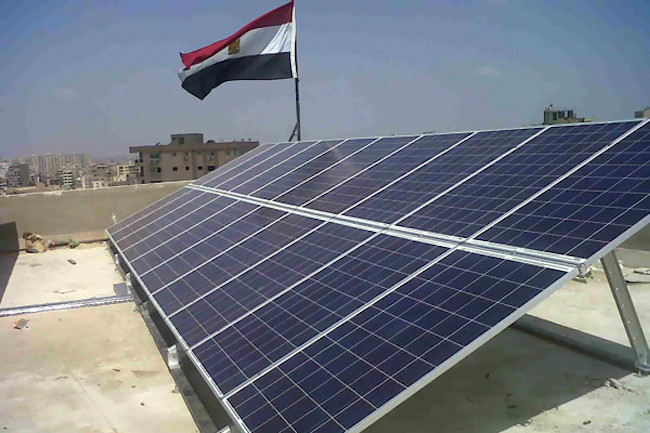China’s example of green investing offers insights into ways forward for Egypt
BY Deborah Lehr, Vice Chairman and Executive Director
Investing in green turns out to be a good deal as well as a good deed. China, which has now become one of the world’s largest markets for green finance, is showing how investing in sustainability is not only important for saving the earth but can bring about excellent returns for the investor.
As Egypt seeks to “clean and green” the country while promoting economic growth, China’s example offers some insight into a path forward for Egypt.
Chinese President Xi Jinping has launched an extensive green finance initiative as a key economic priority. The intent is to use market mechanisms combined with government policy and some government financing to promote green economic growth while providing better environmental protection.
Without private-sector financing, China will be unable to meet the estimated $1 trillion price tag that is needed to finance its ambitious goals on climate, as government financing will only cover about 15 per cent of the total price tag.
As China has discovered, stimulus spending does not always ensure that government money is used effectively. Governments cannot command that private money be used to promote green development.
Instead, China needs to create the necessary vehicles to attract these funds through a combination of good government policy, incentives and disincentives, and a regulatory structure that promotes investment as well as green development.
Only through creating the right regulatory, policy and financial framework has China begun to attract the private-sector financing it needs to meet its goals. China is moving full-speed ahead in creating this structure and the results are bearing fruit.
The opportunities in green investing have attracted private equity funds due to growing opportunities in China’s environmental goods, services and technology market.
Today, there are over 500 green private equity funds in China and growing. One of the first funds, the US-China Green Fund, helps source American technology to invest in China.
Its rate of return is consistently higher than most regular private equity funds. It is a public-private partnership with government support but run as a commercial enterprise. Egypt could consider a similar type of structure for launching a green fund.
China now has the world’s largest carbon-trading exchange, as well as seven regional pilot carbon zones. To help build scale, China is actively supporting the Belt and Road countries, those involved in this major new international trade initiative, to launch their own carbon exchanges and will allow them to trade on China’s national exchange.
Active discussions have already started in the Middle East to support these countries’ efforts to develop domestic exchanges with links to China’s national exchange. Egypt could follow suit, no doubt with China’s full support and cooperation. Private financing could therefore help Egypt to reduce its carbon emissions.
Already, the Egyptian government is moving in the right direction. It has announced its intentions to use the market to help stimulate growth as well as finance sustainable development. Tariffs have been removed on new energy vehicles, which will help promote their use in a country where 50 per cent of pollution stems from vehicles.
The government is planning to issue its first green bonds, which will be dedicated to investing in sustainable projects. The global green bond market is expected to reach $200 billion in 2019, with predicted growth at 20 per cent, but it is still only a small percentage of the more than $100 trillion global bond market.
One reason is that investor demand for green and sustainable investment projects far outstrips the supply of sustainable projects. With all the intended building in Egypt, including the New Administrative Capital, Egypt could attract a significant portion of the $5.8 trillion of private capital seeking investment opportunities if it were willing — and able — to meet this demand through an aggressive campaign to ensure sustainable construction.
China has developed a regulatory structure that promotes the growth of private equity funds at home, but also explores the creation of international funds, including one with Africa.
Given the strategic partnership Egypt currently enjoys with China, as well as its position as a hub for the Belt and Road Initiative in the Middle East and Africa, the government of president Abdel-Fattah al-Sisi should explore the possibility of establishing a China-Egypt fund to harness Chinese technology and deploy it to help achieve Egypt’s sustainability goals.
Finally, as Egypt launches its own financial-services (fintech) initiative, especially to reach small and medium-sized companies, it is possible to take sustainability online. As a global leader in fintech, China is already doing just that.
The Chinee firm Ant Financial, for example, has created Ant Forest, an online game that encourages players to reduce their carbon footprint. Based on the data collected, Ant Forest is able to market sustainable products to its 350 million users based on players’ interests and goals.
Other fintech companies are increasing their microlending for sustainable projects and extending these loans to companies at preferential rates to promote green habits. Many of these companies are small and medium-sized enterprises, creating a double benefit: supporting entrepreneurs while providing incentives for them to go green.
These are just some of the current examples being tested in the markets, but there are far more digital opportunities to look forward to as the fintech ecosystem continues to develop. The time is right to align the rollout of accessible fintech with sustainable financial instruments.
Over the past five years, China has built the most innovative and competitive market for green finance in the world. It is using the framework of the financial system and market mechanisms to promote and finance sustainable development, as well as change consumption patterns towards green products.
As Egypt considers plans for economic growth and development, there is much that policy-makers can take from China and apply to Egypt on how to combine green development while at the same time successfully stimulating the economy.
This article was originally published by ahramonline.



